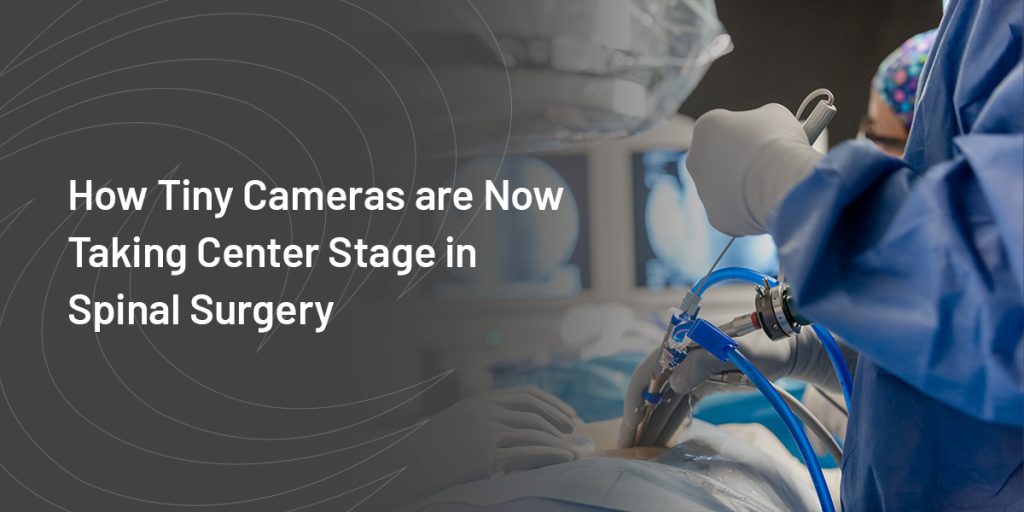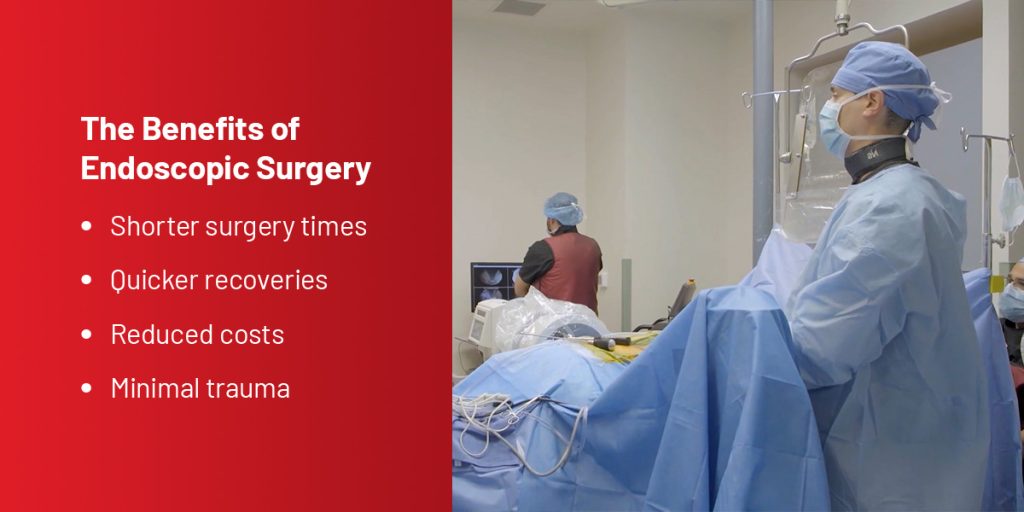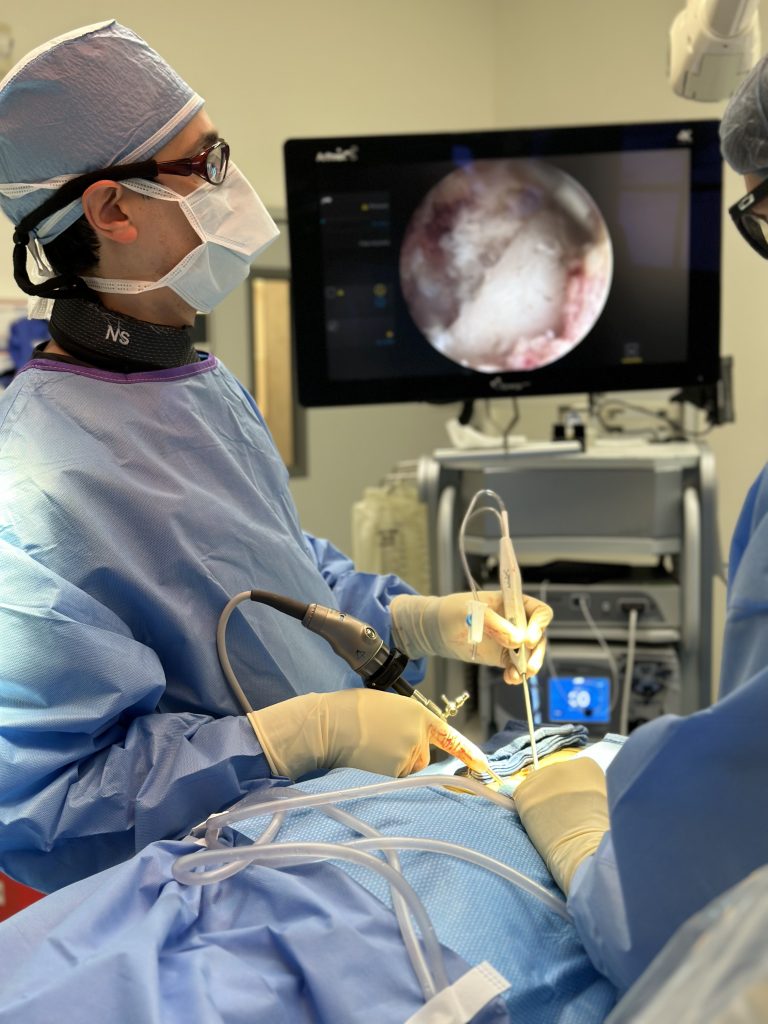
Dealing with back pain caused by disc degeneration and herniation has long been a challenge. For years, surgeons have been using various techniques to address these issues, with the operating microscope being a crucial tool. However, a game-changing evolution is happening in spinal surgery thanks to a device that’s been around for a while — the endoscope. In this article, we’ll delve into how this tiny camera, which has sat in the background, is now stepping into the spotlight to reshape the way we treat back problems and offer hope for faster recovery.
Endoscopic surgery relies on an endoscope, a rigid tube containing optical lens with an attached camera. The endoscope with attached camera is inserted into the body, usually through an incision in the skin in the lower back. It gives the surgeon more visibility and facilitates operation through a much smaller incision.
These devices aren’t new and are commonly used for minimally invasive procedures, like inspecting the knees, shoulders and hips in orthopedic surgery. Providers can also use endoscopies to collect biopsies for tumors in the spine. Their small incisions make them great for minimizing damage, and many endoscopic procedures don’t require a general anesthetic. Spinal surgery, for example, only requires conscious intravenous sedation and a local anesthetic, reducing risk and speeding up the time the patient spends under observation.
In endoscopic spinal surgery, the provider uses X-rays to find the correct location on the spine before making a tiny quarter-inch incision. The endoscope gets fed through the incision, and specialized instruments get fed through the endoscope. The surgeon can then operate on the nerves according to the procedure required. After removing the endoscope, the patient receives a small stitch and bandage on the incision site. They can typically go home within a few hours of surgery.
Some conditions that can benefit from a spinal endoscopy surgery include sciatica, herniated or bulging discs, spinal stenosis, and lower back pain.
Back in the day, surgeons relied heavily on powerful microscopes to navigate the intricate landscape of the spine. These microscopically assisted techniques have long been the gold standard, allowing surgeons to perform delicate surgeries with precision. However, the procedure required moving sensitive nerves and tissues, removing bones, and using anesthesia. This approach, though effective, had its challenges.
What’s intriguing is that while we’ve had the endoscope for quite some time, its role in spinal surgeries was relatively limited until recently. Its potential began to be recognized in the 1970s when innovative minds like Dr. Parviz Kambin and Dr. Harris Gellman introduced methods to approach the spine from the side. This opened up the possibility of improved access to the intervertebral disc space.
As the years passed, the endoscope’s potential in spinal surgeries gained traction. Dr. Anthony Yeung’s significant contributions to this field involved designing a special endoscope that changed the game. When combined with specially designed tubes, this instrument allowed surgeons to get an inside view of the spine without making extensive incisions. This breakthrough meant that surgeons could access intricate areas more precisely and remove problematic fragments more accurately.
While the endoscopic technique has been around for a while, its adoption has been slower compared to other fields like abdominal surgeries or joint examinations. However, that’s changing. Thanks to advancements in technology and a better understanding of the technique’s potential, more surgeons are turning to endoscopic methods for spinal surgeries.

The shift towards endoscopic spinal surgery isn’t just a passing trend — it’s backed by solid evidence. Studies have shown that patients undergoing endoscopic procedures experience benefits such as:
Benefits like these can offer a breath of fresh air for individuals dealing with back pain — a chance to recover faster and get back to their lives.
As with any new technique, there’s a learning curve involved in mastering endoscopic spinal surgeries. Surgeons need time and practice to become proficient in using this technology effectively. Those with prior experience in related procedures, like discography or joint arthroscopy, might find this transition a bit smoother.

The world of spinal surgery is undergoing a remarkable transformation, all thanks to the unassuming endoscope that has been waiting in the wings. While this tiny camera has been around for a while, it’s finally gaining the attention it deserves, reshaping the landscape of spinal surgeries. As more surgeons embrace this technique and technology continues to advance, the future of treating our spines looks brighter than ever before.
Our team at the Desert Institute for Spine Care (DISC) has extensive experience in endoscopic surgeries. We focus on minimally invasive procedures, with a staff that stays up to date on evolving technologies. If you’re interested in endoscopic spinal surgery, we’re ready to talk. Reach out to us today to schedule an appointment and learn more!